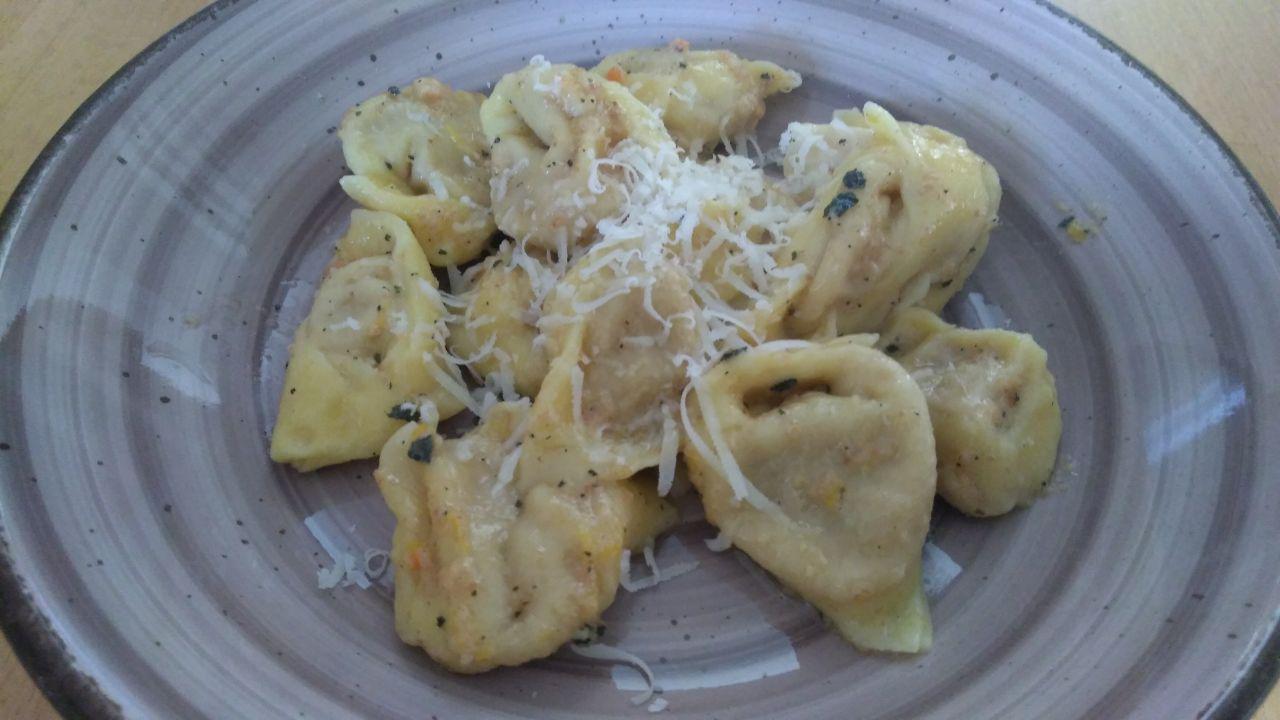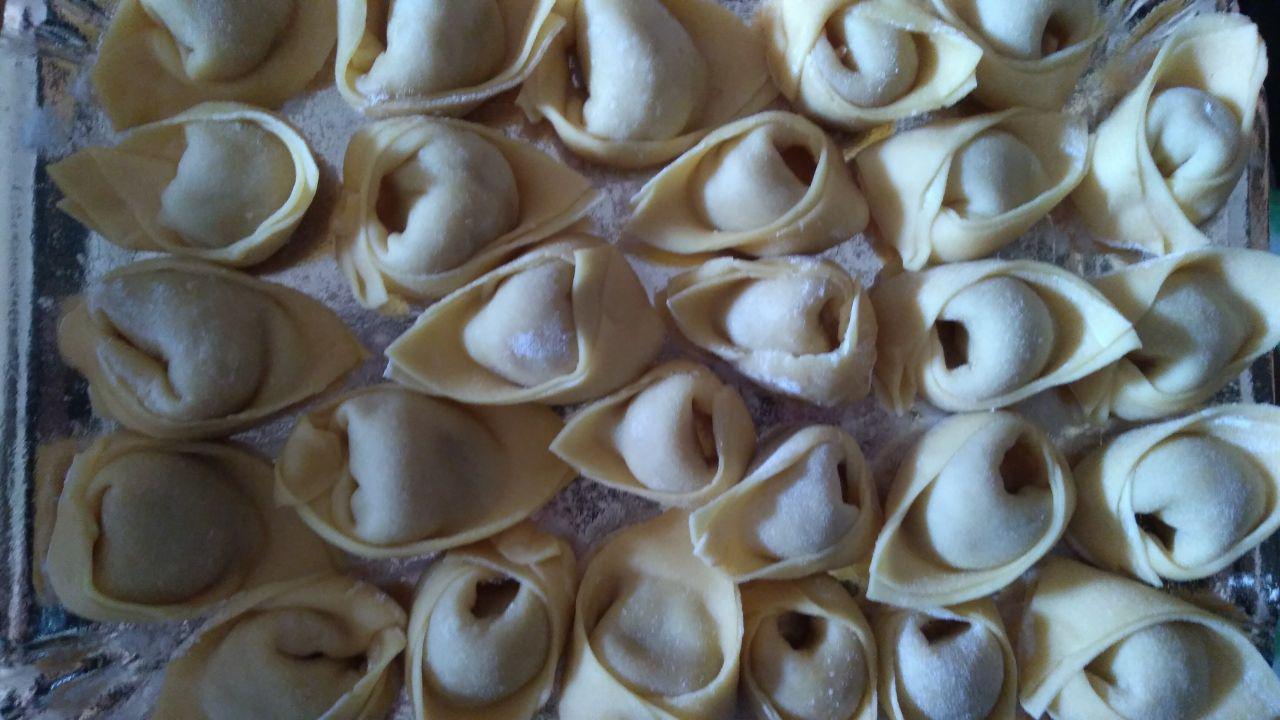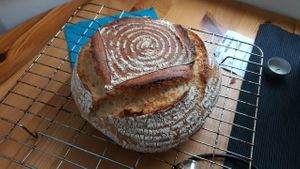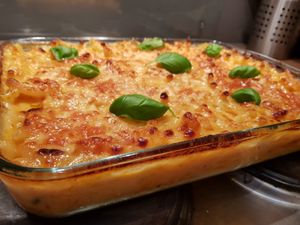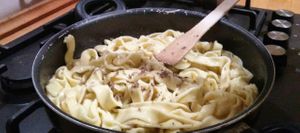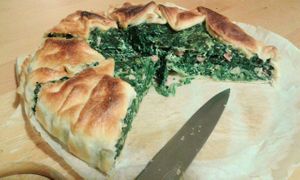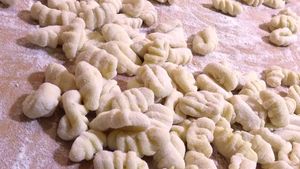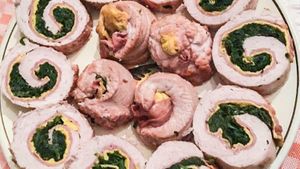A delicious filled pasta from the Italian regions of Emilia Romagna and Lombardy. Stuffed with pumpkin and served with butter and sage, it's a perfect winter pasta dish.
Across the Northern Italian regions of Lombardy and Emilia Romagna, you will find many variations of tortelli di zucca. In this version we are using pumpkin, crushed amaretti biscuits, parmigiano, nutmeg and apple mustard for the filling.
The Filling
The filling needs to be prepared the day before, so it can rest in the fridge overnight. An alternative to the apple mustard can be mustard powder and apple jam.
Ingredients
- One large pumpkin (~700g)
- 200g of dry amaretti biscuits
- One medium egg
- Parmesan (parmigiano reggiano) cheese
- Pecorino or "formaggio di fossa" cheese
- Wholewheat breadrumbs
- Salt
- Nutmeg
- Apple mustard
Method
From 700g of pumpkin we expect to get about 300g for the filling after processing and baking.
Preheat the oven to 220°C (non-ventilated) or 200°C (ventilated)
Slice the pumpkin into slices about 2cm thick, and spread them out on a oven paper covered baking tray. When the oven is heated, place them in for about 20 minutes if not ventilated, or 10 minutes if it is.
Keep an eye on the pumpkin to make sure it does not burn or brown. When the slices can be pierced easily all the way through with a fork, it is done. Once done the oven can be turned off but the pumpkin left in their to dry out while the rest of the filling is prepared.
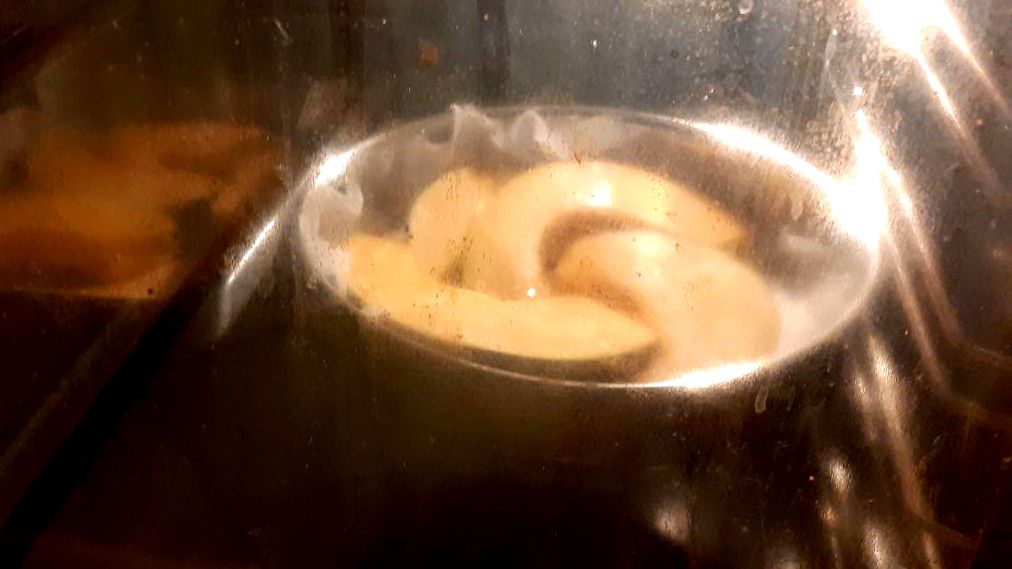
While waiting for the pumpkin to cook, crush the amaretti biscuits to a consistency of breadcrumbs and place them into a large bowl.
Remove the pumpkin from the oven and peel off the skin and remove the seeds and fibrous strands, leaving just the pulp. If it is still quite wet, give each slice a gentle squeeze over the sink. If the filling has too much water in it, it will ruin the pasta.
Mash the pumpkin pulp with a potato masher, place them into the bowl with the crushed biscuits and mix well.
Finely grate and mix in about 40 grams of the parmesan and 40 grams of the pecorino.
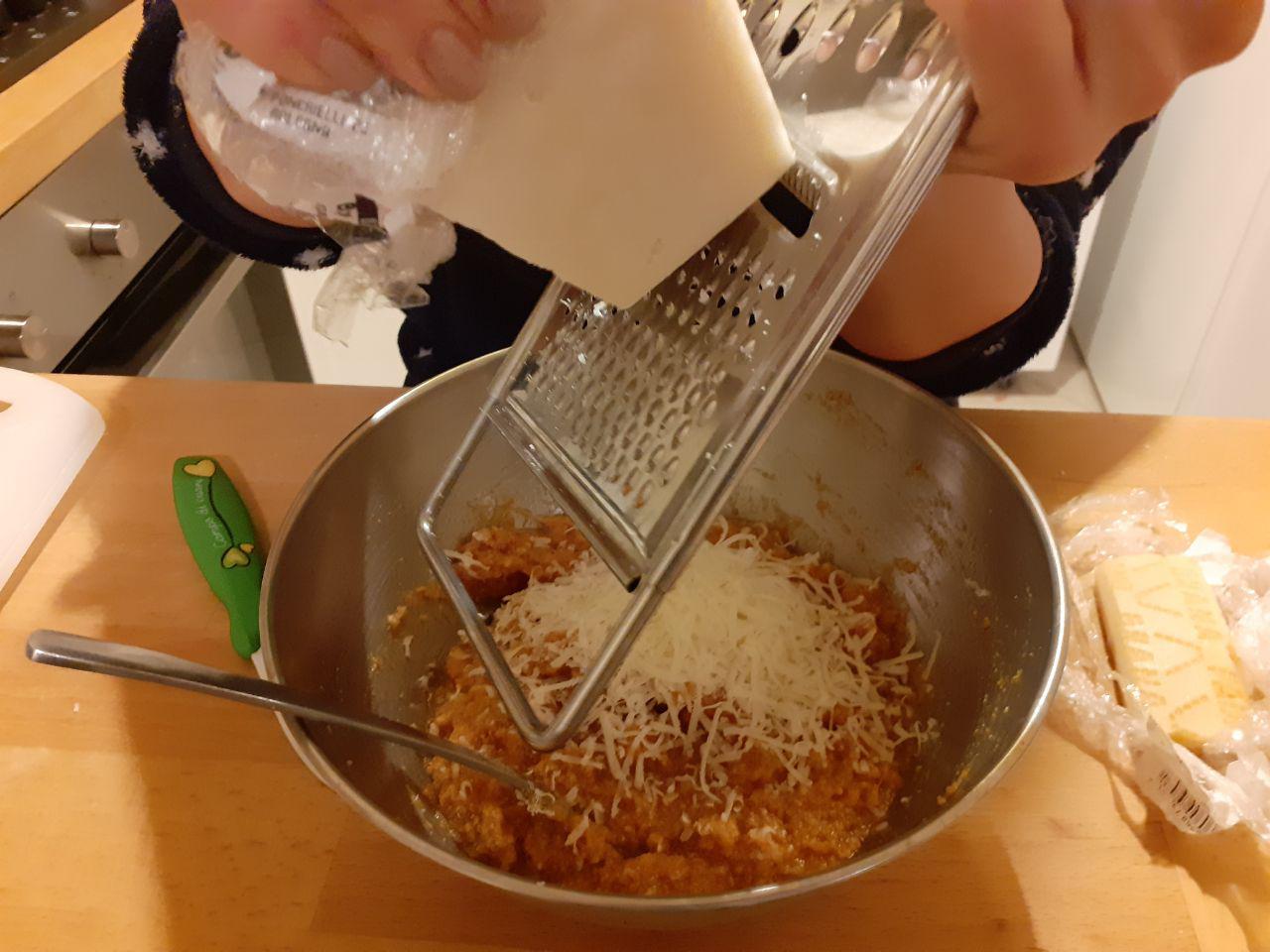
Season the filling with salt and nutmeg and add about 40 grams of the apple mustard and crack in the egg.
Mix the filling well, and if it is still runny add some wholewheat breadcrumbs to thicken it. It should be slightly runnier than needed as it will thicken in the fridge.
Cover with clingfilm and place in the fridge overnight.
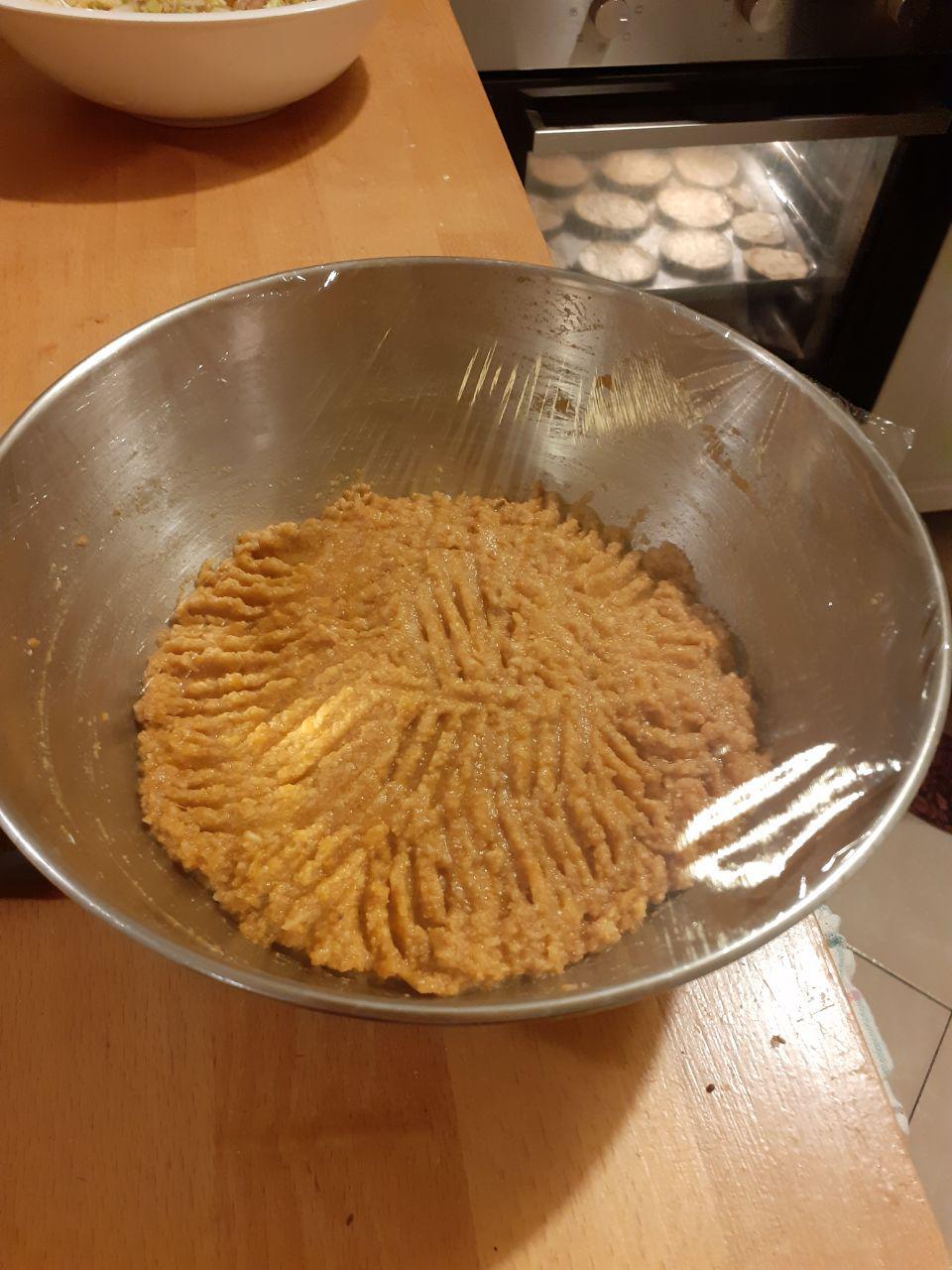
The Pasta
Prepare the pasta after letting the filling rest in the fridge overnight. The rule of thumb is 1 egg for every 100g of flour - either 100% '00' grade flour or 80% 00 and 20% semolina.
For the amount of filling we've made, 300g of flour and 3 eggs works well.
Ingredients and Equipment
- 300g flour + more for dusting
- Three medium eggs
- Rolling pin
- Pasta machine
- Trays or tins for drying
Method
Sift the flour into a large bowl and make a well in the middle. Crack the eggs inside and begin mixing.
When the dough is stiff enough, take it out of the bowl and knead it on a lightly floured surface until smooth in consistency.
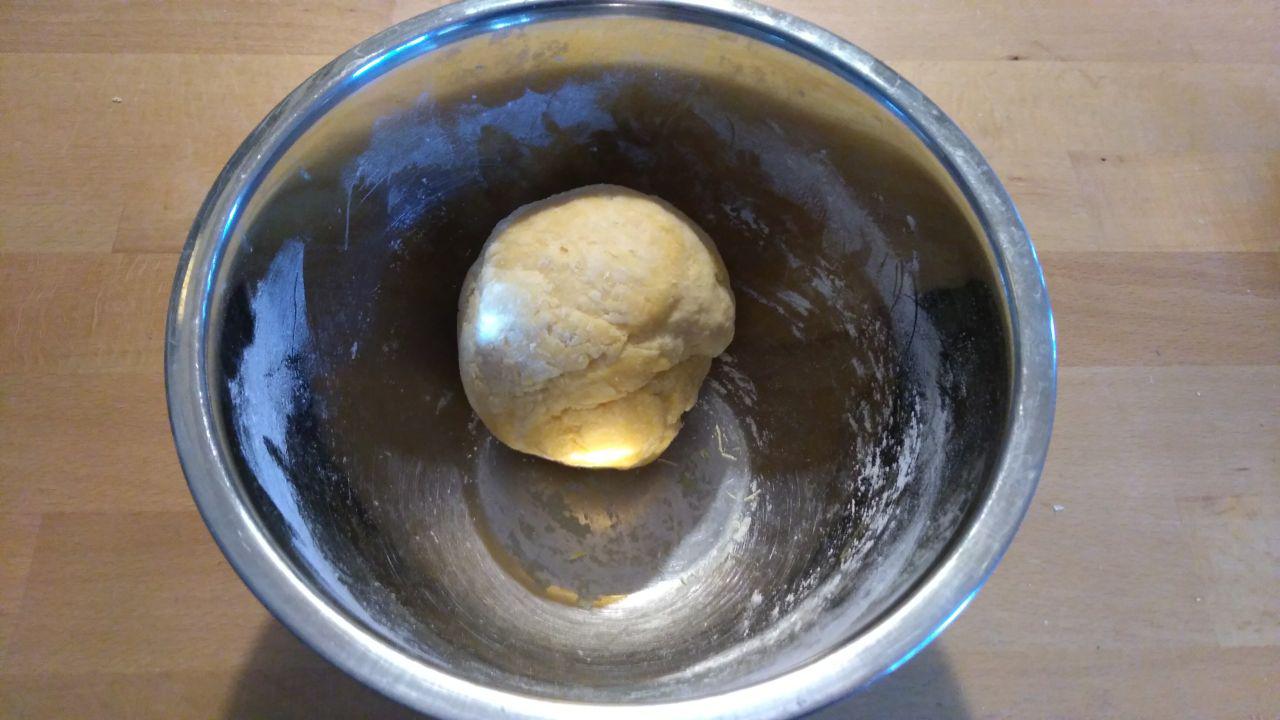
Wrap the dough in cling film and let it rest in the fridge for 20 minutes.
After it is has rested, dust a large surface with flour, set up the pasta machine and a small cup of tepid water (to close the pasta).
Tear off a chunk of the dough. Roll it flat with the rolling pin, a few mm thick and narrow enough to fit in the pasta machine's rollers.
Put the dough through the machine's rollers on the widest setting twice, then repeat but decrease the roller spacing each time. The pasta needs to be just thick enough that it is not translucent, but be aware that the elasticity of the dough will cause it to relax back after rolling. Therefore it's fine to roll the dough slightly thinner than needed.
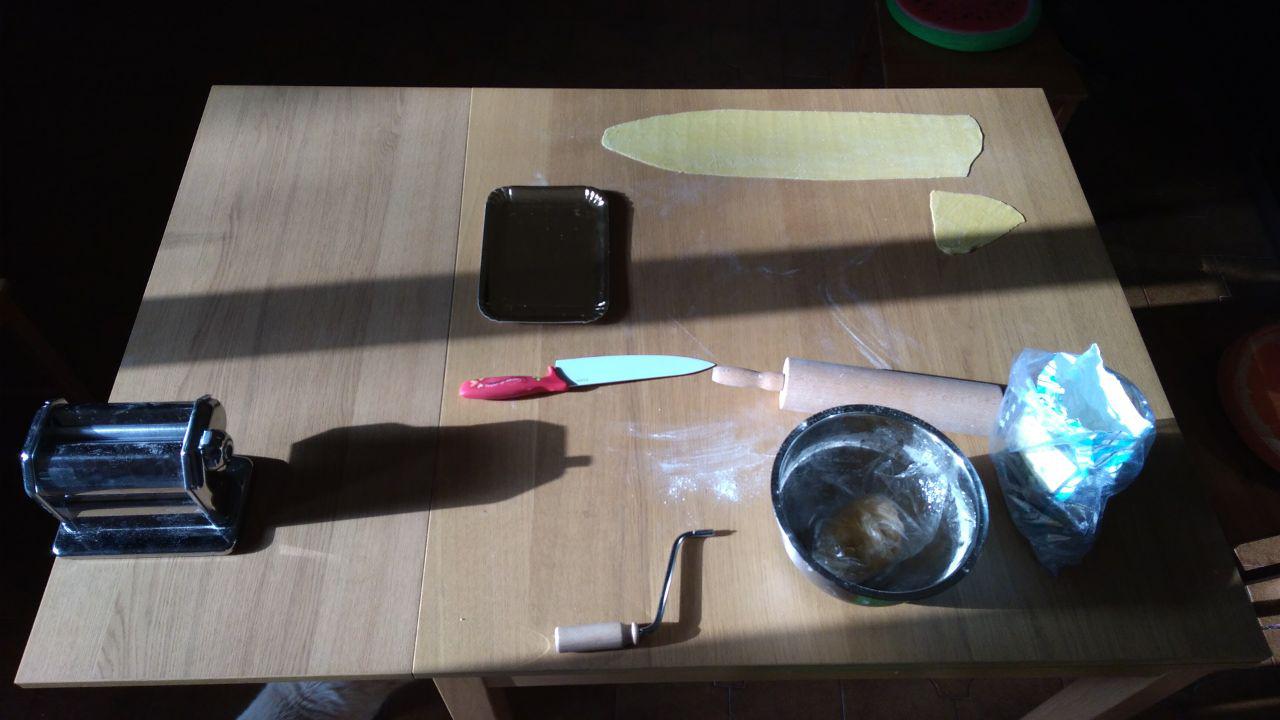
Slice the rounded ends off the dough and any wonky edges. Keep these scraps aside as they can be reformed into another sheet later.
Use a sharp kitchen knife to cut the sheet into squared, 5-6cm on each side. Use a teaspoon to scoop a bit of the filling onto each square.
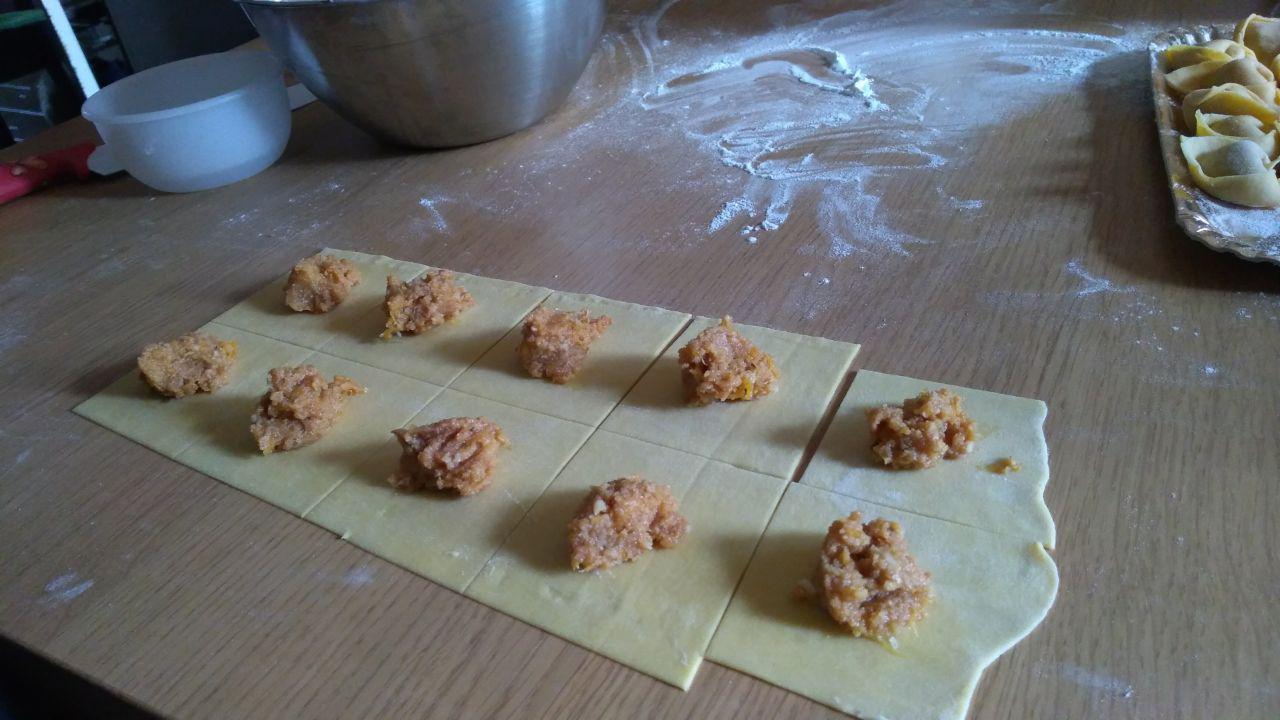
Closing the tortelli takes some practice. Here are the steps in detail:
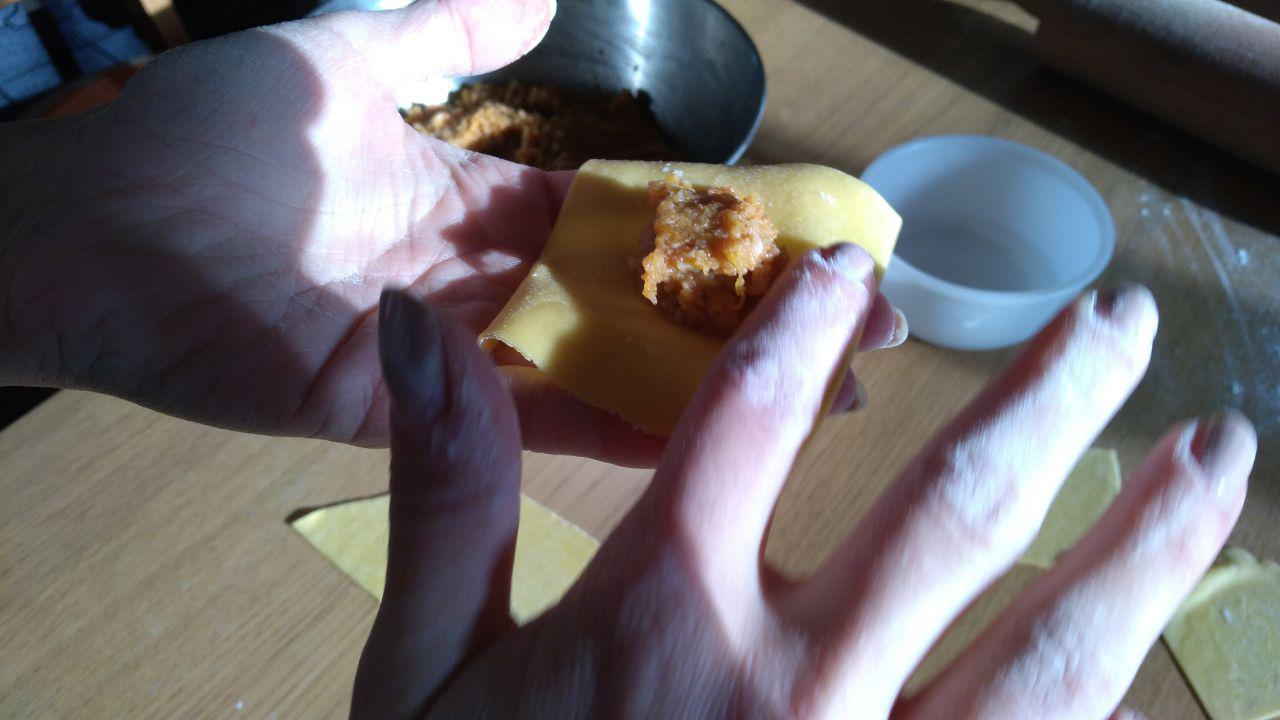
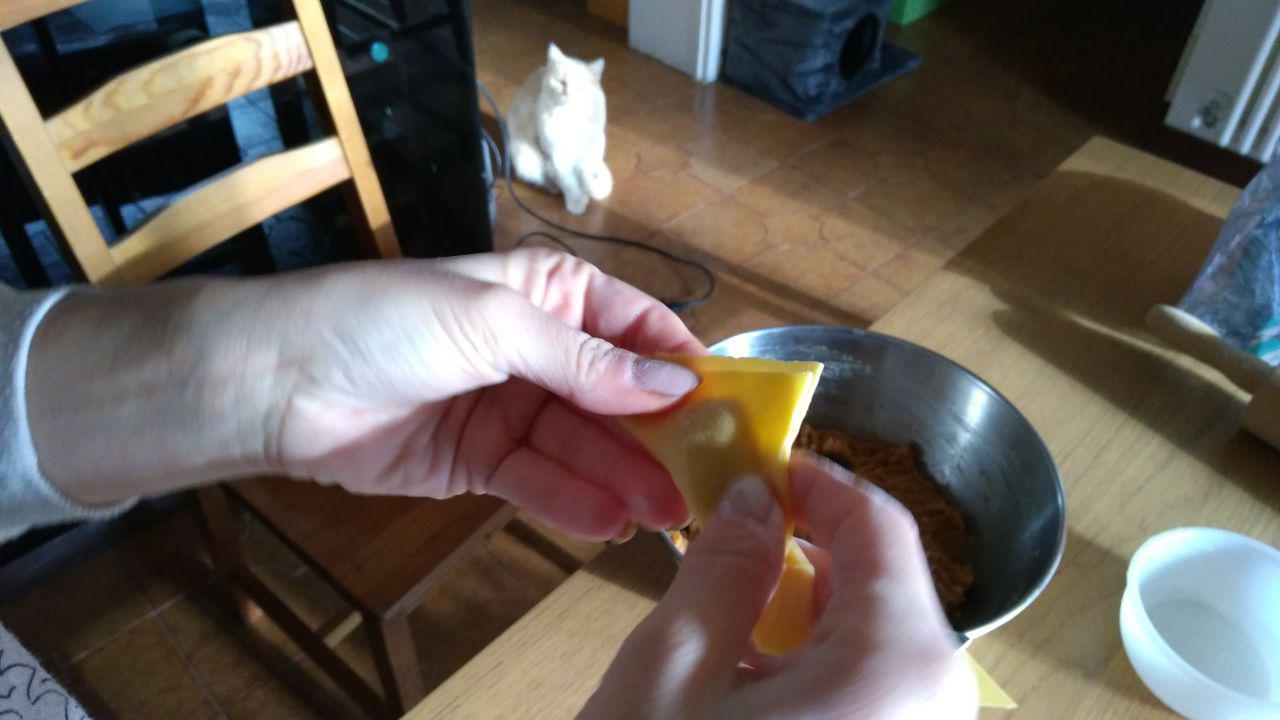
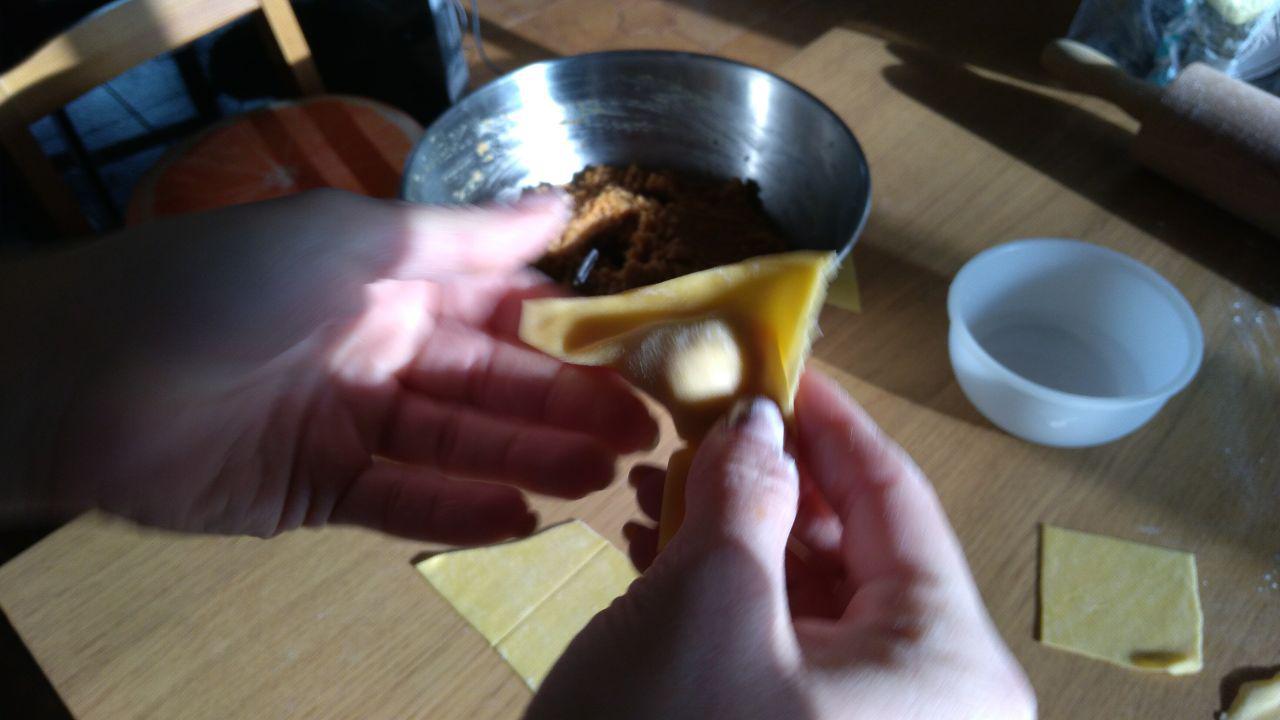
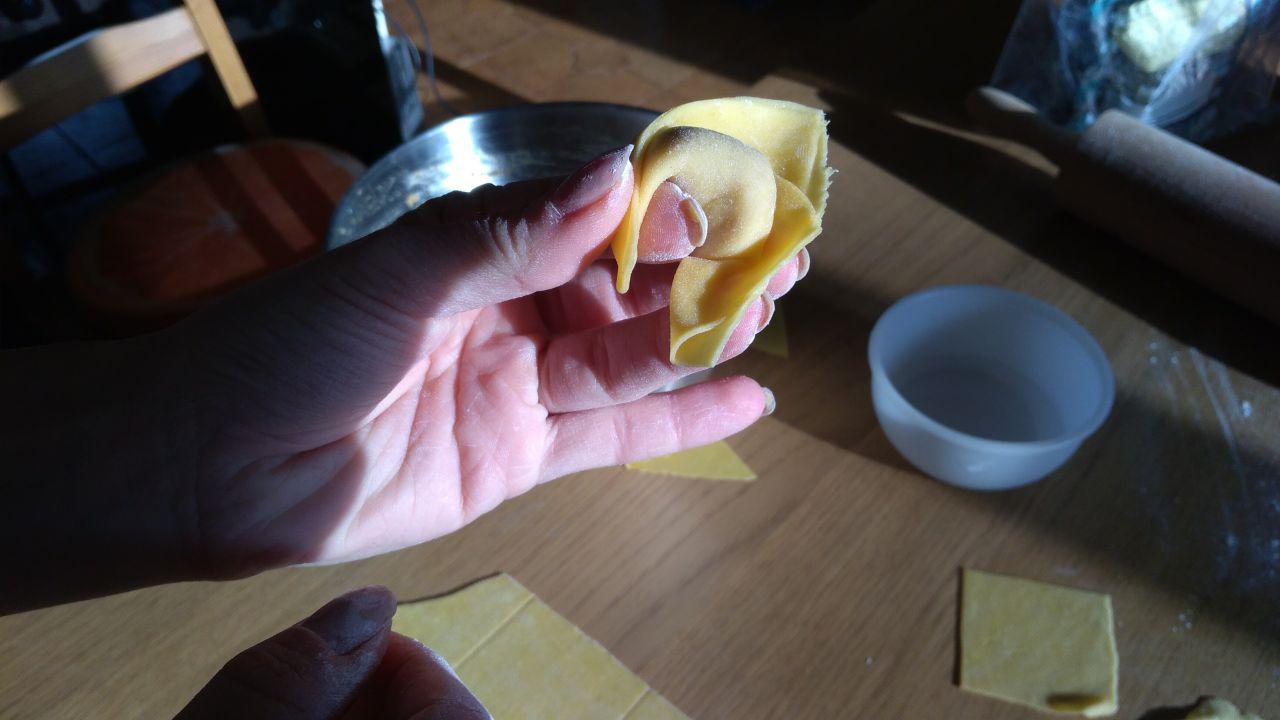
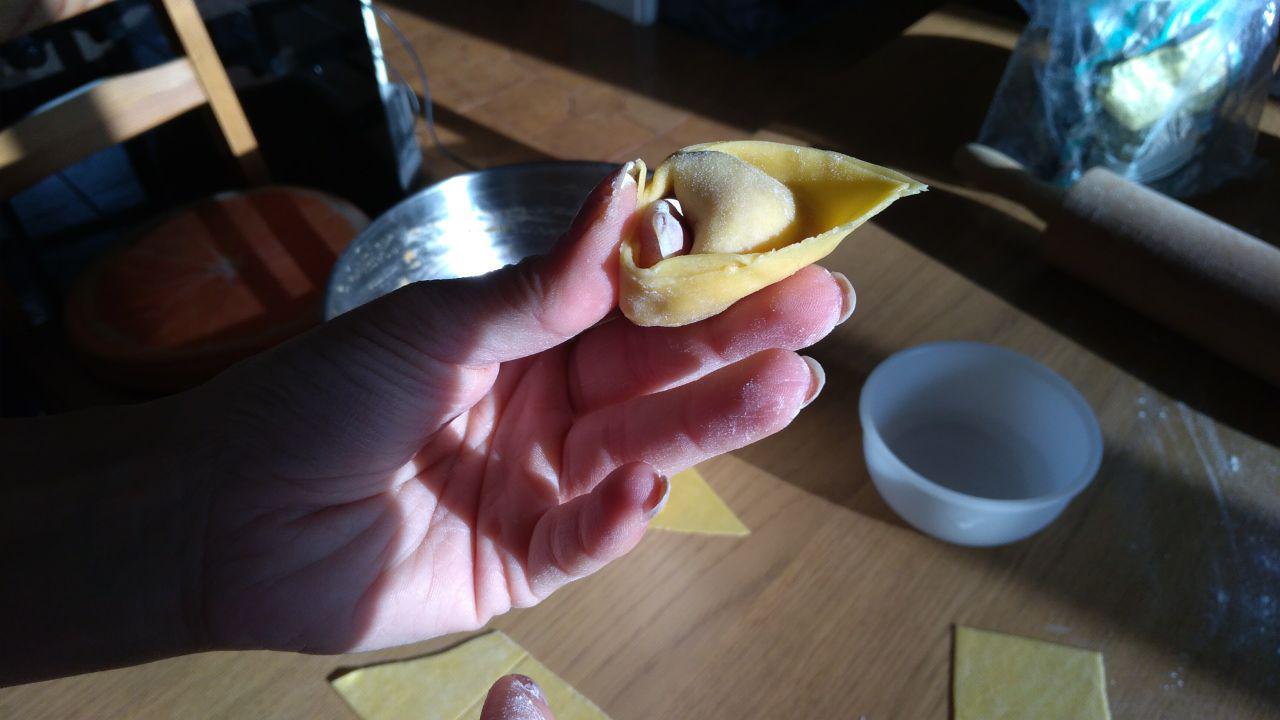
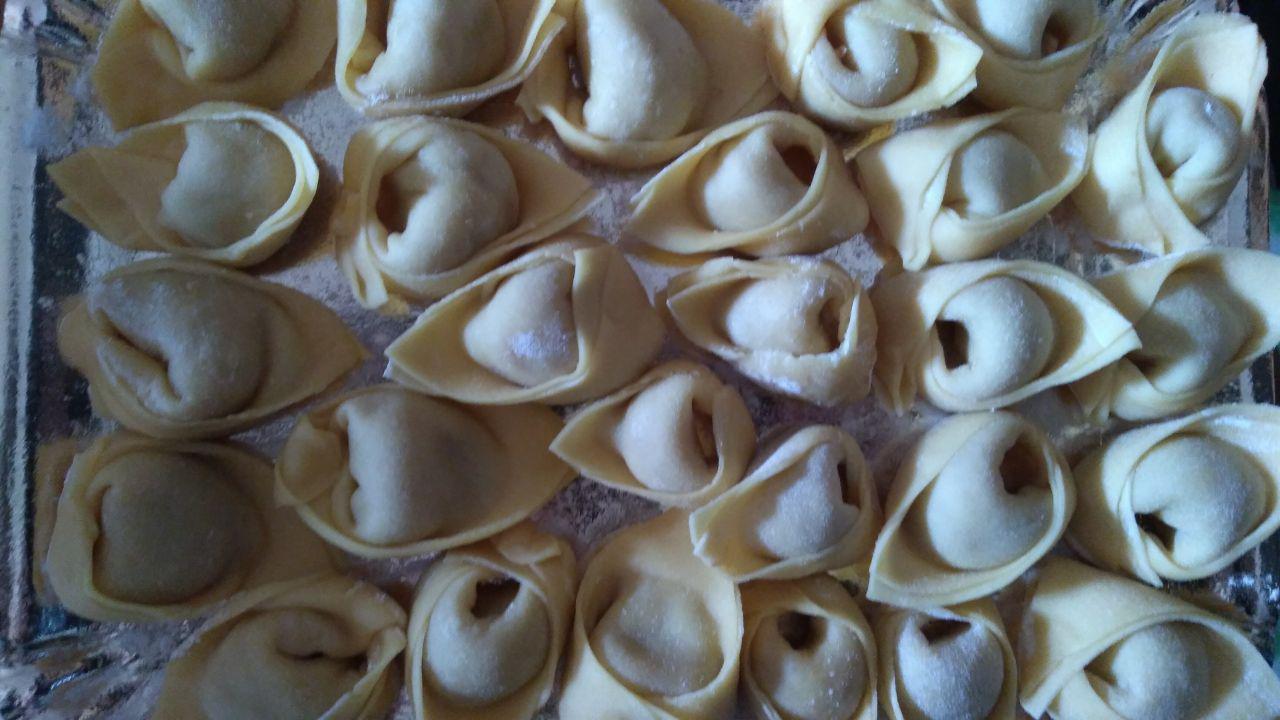
Flour the bottom of the pasta and place them spread out on a tray. When a tray is full place it in the oven with the fan on but not heated to dry out a little.
Once the pasta has stiffened from the drying, they should either be immediately cooked or frozen. If freezing, flour them liberally and tie them in a freezer bag. Do not take them out of the freezer again until they are ready to go straight in boiling water.
Serving
The traditonal way of serving tortelli di zucca is with butter and sage.
Ingredients
- The amazing tortelli you made
- Butter
- Sage
- Salt
Method
Bring a large pot of water to the boil and add salt. You want to make sure you have at least double the amount of water needed to cover the pasta completely, as cooking from frozen will lower the water temperature significantly. We do not want too long between adding the pasta and the water returning to the boil.
Once the water is boiling, remove the pasta from the freezer (not before!) and add them immediately. If they begin to defrost before being added to the water they will stick together.
Cook for about 5-7 minutes.
In another pan, add a knob of butter and melt until frothy, but without burning. Add the fresh sage. Rip the sage leafs into pieces instead of cutting them with a knife or it will accelerate the oxidisation and turn black.
Once the pasta is cooked, drain them and add them to the butter and sage. Mix delicately on a low heat taking care not to burst open any of the tortelli.
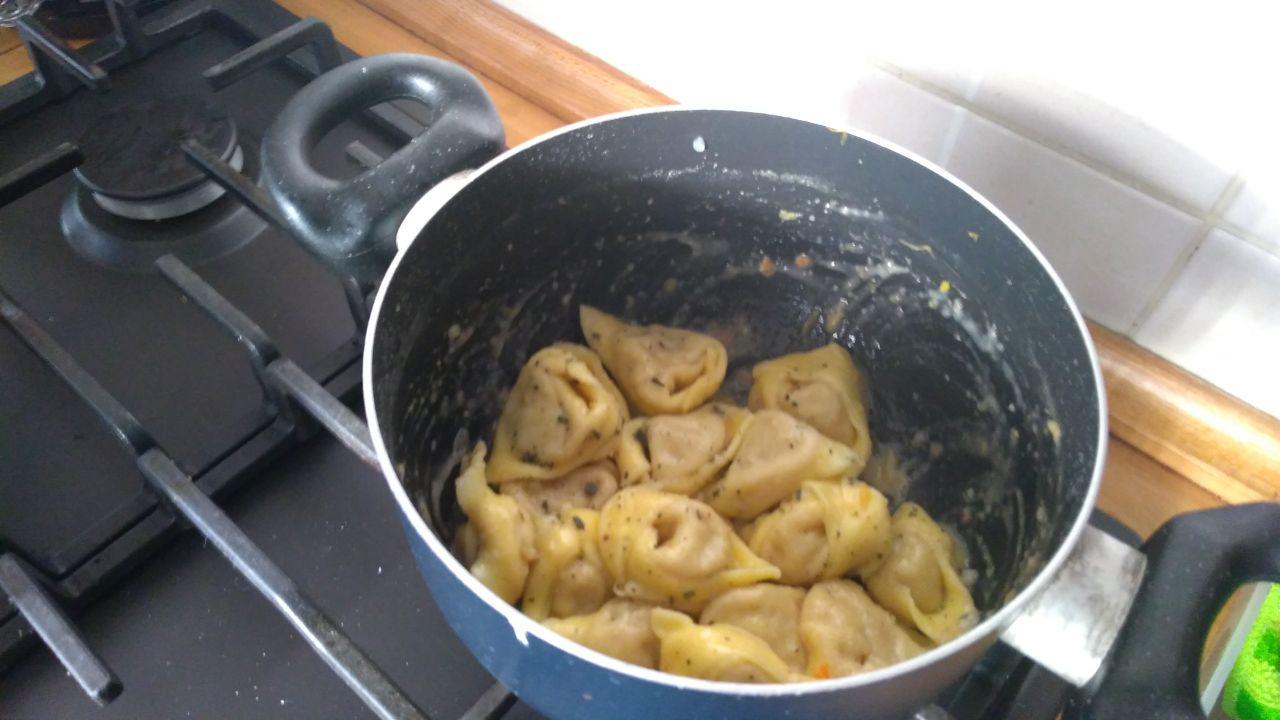
Serve with a generous covering of grated parmesan or pecorino.
